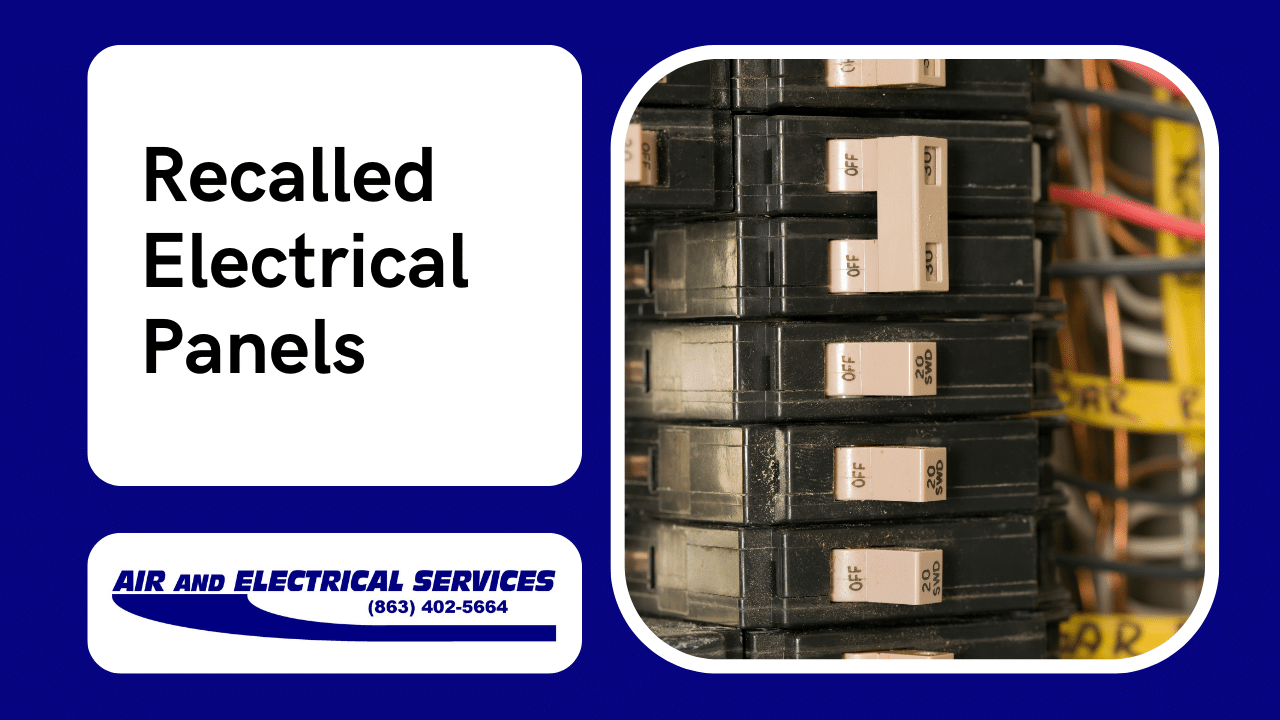Several panels have been listed as potential fire hazards, some which present enough of a liability that insurances companies may refuse to insure your home.
- Federal Pacific Panels. These panels were installed between 1950-1990 in many homes located in Florida.
- Zinsco or GTE-Sylvania Panels. Installed in the 1970’s, these types of panels are a known fire hazard and should be replaced as soon as possible.
- Challenger Electrical Panels. We have completed multiple Challenger panel replacements due to insurance companies letters stating they would drop the customer unless their panel was replaced.
- Pushomatic. Not considered a huge fire hazard, but present some level of fire hazard due to worn-out, deteriorating, overwhelmed parts.
Federal Pacific Electric: FPE panels were a popular electrical panel and were widely used starting in the 1950s through 1990. However, Stab-lok panels can fail to trip when a circuit is overloaded, causing the system to overheat and potentially ignite a fire. This issue led the US Consumer Product Safety Commission (CPSC) to investigate Stab-Lok panels in the early 1980s.
While FPE Stab-Lok panels were never actually recalled, most electricians recommend removing them. Here are a few ways you may be able to recognize FPE Stab-loks: Federal Pacific Electric or FPE stamped into the metal cover; look for a label on the inside that reads Federal Pacific Electric, Federal Pioneer FPE, or Stab-lock; or look for breakers with a red stripe on each switch.
Zinsco: Many homes built or updated in the 1970s, particularly those in the western portion of the county, have electrical panels made by Zinsco. Unfortunately, these panels have several design flaws that create a serious electrical panel fire hazard, including insecure connections between breakers and bus bars (the part that distributes power); components made of aluminium that weakens over time; bus bars that corrode easily; and breakers that melt into the bus bar.
Zinsco panels may continue to conduct electricity even when the breaker appears to be off.
Zinsco was purchased by GTE Sylvania in 1973. Check to see if your panel is one of the following: Zinsco, Sylvania, GTE-Sylvania, or Sylvania-Zinsco.
You can also look for bright red, blue, and green tabs on the individual breakers, but treat this as a rule of thumb. Zinsco electrical panels can also have black breakers.
Challenger Panels: During the 1980s and early 1990s, Challenger electrical panels were installed into hundreds of thousands of homes, but they were recalled in 1988. That recall specifically focused on Challenger panels with 15- and 20- ampere circuit breakers made between February and April of 1988 that have a mechanical internal failure that leads to overheating and eventually fire.
Unfortunately, problems with these panels continued even after Eaton/Cutler Hammer purchased Challenger. In 2014, Eaton/Cutler Hammer recalled 1,000 panels because their easily accessed components presented a shock risk.
You may have a Challenger electrical panel that you need to replace if you see: Challenger stamped on the handle or door, Challenger on the manufacturer’s label (often found on the inside of the panel door), or look for breakers with yellow buttons and the word “test” on one side.
Please note that Challenger parts can show up in other electrical panels, including those made by GTE Slyvania and Zinsco.
Pushmatic: Pushmatic panels were popular from 1950 through 1980. During that time, the Pushmatic system wasn’t known to have any fire hazard, but it’s now considered an outdated system and should be replaced due to age and weakening of structural components over time.
Identifying a Pushmatic panel is easy. Pushmatic has rectangular buttons that activate and deactivate circuits.
If you have received a letter from your insurance carrier stating that you have an electrical panel that has been recalled, or you know that you have one of the panels listed above, call Air & Electrical Services today for a solution. Financing is available for electrical system upgrades.


